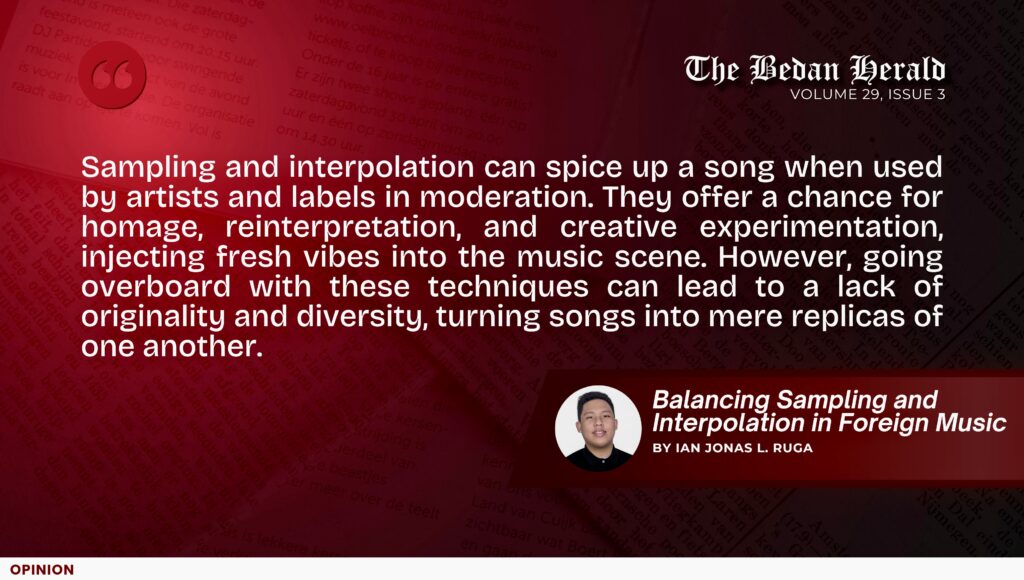By Ian Jonas Ruga | February 16, 2024
Balancing Sampling and Interpolation in Foreign Music
IN the world of music, interpolation involves integrating elements such as melodies, rhythms, or lyrics from one song into another. At the same time, sampling entails taking a portion of a sound recording and reusing it in a different song or composition. But why discuss these techniques? In recent years, they have become the music industry's favored strategy in composition. Recent examples are abundant: "Got Me Started" by Troye Sivan borrows the synth melody from "Shooting Stars" by Bag Raiders, "I'm Good" by Bebe Rexha ft. David Guetta lifts the vocal melody from the 1998 hit "Blue" by Eiffel 65, "That Way" by Lil Uzi Vert borrows the chorus from The Backstreet Boys’ "I Want It That Way," and many more. Consequently, the question persists: are these methods displays of sheer brilliance or signs of creative bankruptcy?
Labels and artists are playing it safe these days, relying heavily on sampled songs already hits from the past. It's like the music industry's shortcut to success. Take Nikki Minaj's "Super Freaky Girl," for example, and it borrows its melody from MC Hammer's "U Can't Touch This," which itself samples Rick James' classic "Super Freak." While there's nothing inherently wrong with this approach, it's all about making money; artists and labels are all about hits. Nowadays, creating something original can be a substantial financial risk for record companies if it doesn't sell. Sampling helps minimize that risk by using what's already proven to work, even if it means sharing profits with the original creators. As long as it's almost guaranteed to be a hit, labels are willing to make that trade-off.
However, interpolation and sampling in the music industry are often criticized as they stifle creativity, leading to a lack of innovation and artistic authenticity. Critics argue that it results in a homogenization of music, where songs start to sound alike due to widespread sampling. Furthermore, songs that sample from others often cherry-pick only the most appealing elements, lacking genuine substance and redeemable quality.
Sampling and interpolation can spice up a song when used by artists and labels in moderation. They offer a chance for homage, reinterpretation, and creative experimentation, injecting fresh vibes into the music scene. However, going overboard with these techniques can lead to a lack of originality and diversity, turning songs into mere replicas of one another. So, artists and labels must strike a balance, using sampling and interpolation thoughtfully to keep the music landscape vibrant and exciting. As the industry evolves, finding this balance becomes increasingly crucial, shaping the future of music in unpredictable ways. It's this delicate equilibrium that keeps us all on the edge of our seats, eagerly anticipating what musical innovation lies ahead.
Volume 29 | Issue 3




